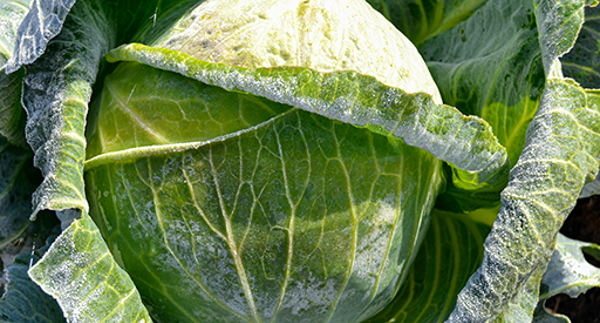
As the weather cools down and the first frosts approach, there are steps you can take to protect your garden from frost damage.
With some simple preparation you can help your plants survive and thrive through winter.
TIPS FOR PROTECTING YOUR CROPS FROM FROST
- Reduce watering in winter so there's less moisture in the soil to freeze, but don’t allow plants to completely dry out.
- Add layers of pea straw or Tui Mulch & Feed to garden beds before the first frost arrives. After a frost is too late as the mulch will insulate the soil and keep the cold in - at that stage it could be more damaging than not mulching.
- Covering crops with frost cloth can be a good option. It allows light in so doesn’t need to be removed every day. Be sure to peg the frost cloth down securely.
- Invest in a glasshouse or a cold frame for starting plants off and harden them off before planting out. A cloche or growing tunnel will protect them once planted.
- Grow frost tender plants such as frangipani, avocados and tamarillos in pots and containers that can be moved in winter.
- Don’t remove frost damage on plants until temperatures warm up otherwise the plant may send out new growth and that can get frosted again.
FLOWER TIPS
- Don’t prune roses too early especially if temperatures are still warm. Pruning can push soft new growth which could get frosted and lead to diseases such as die-back.
- Likewise for hydrangeas, in frost prone regions leave the spent/dead heads on the plant as that gives the new growth below some protection.
FROST HARDY PLANTS
It's best to get crops established before any chance of frost. Crops like carrots, beets, parsnips and leeks will happily sit in the ground and slowly mature through the cold of winter. Ideally root veges need to be well bulbed up by May for decent winter crops.
If there are regular frosts in your region it’s worth considering more frost-tolerant plants for your place. Some of our favourites are:
- Winter lettuce varieties such as Cos, Tom Thumb, Little Gem, Lamb's Ear lettuce, Corn Salad, loose leaf varieties such as oak leaf green and red as well as mesclun winter greens.
- Onions, cabbage, broccoli, cauliflower, kale, peas, spinach, parsnip, coriander, broad beans are all vegetables that enjoy cooler weather.
- Cool climate flowers include viola, primula, pansy, cyclamen, calendula.
FROST CAN IMPROVE FLAVOUR
Some vegetables are better left in the ground until the first frost, which helps intensify the sweetness of the vegetable.
- Pumpkins - the foliage will be frosted but the pumpkins will taste better with a touch of frost.
- Yams - the frost will knock the foliage but the yams will taste sweeter.
- Parsnips - become sweeter after a frost.
Discover tips for frost damaged plants and tips for growing undercover.
Post a comment
Frost protection tips Comments
Be the first to write a comment